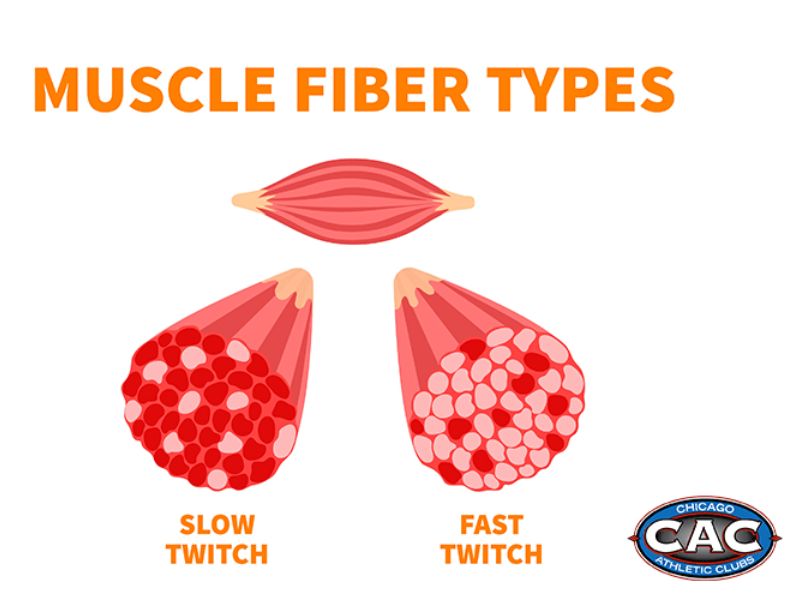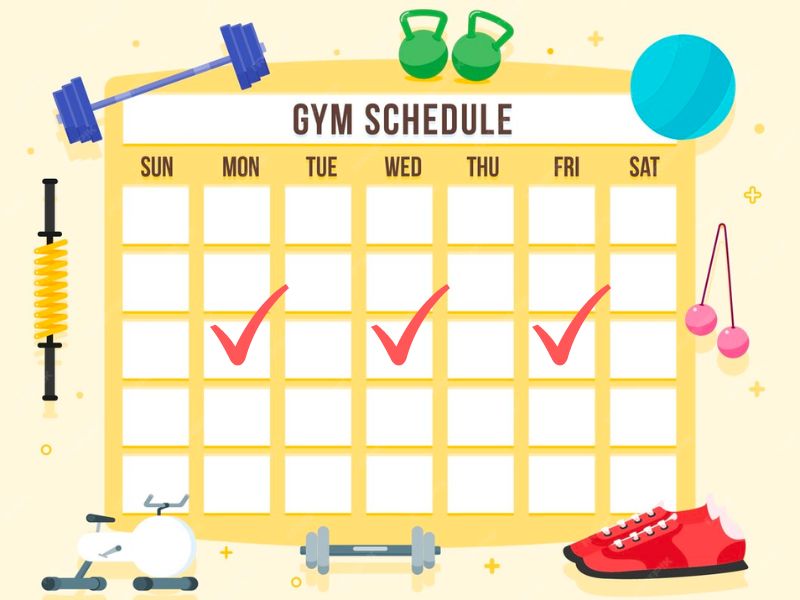Did you know some people burn more calories than others, even while relaxing? It all comes down to muscle mass.
Studies have shown that individuals with more muscle can burn up to 500 extra calories a day, simply because muscle is metabolically active tissue [*].
This article will guide you on how to unlock the power of muscle to turn your body into a calorie-burning machine.
We’ll explore how strength training can help you build muscle, discuss strategies to optimise your metabolism beyond exercise, and debunk common myths surrounding weight loss [*].
Get ready to stoke the fire and take your fitness journey to the next level!
Muscle and Metabolism: Burning More Calories
Muscle vs. Fat:

Let’s picture your body as a bustling factory, with different departments performing various tasks. Muscle tissue acts like the hardworking employees, always on the move and in need of constant energy.
In contrast, fat tissue is more like the storage rooms, holding onto excess energy for future use. When it comes to calorie burning, muscle steals the show.
It’s metabolically active, meaning it burns calories even while you’re lounging on the sofa binge-watching Netflix.
This metabolic activity results in a higher Basal Metabolic Rate (BMR) for individuals with more muscle mass, essentially turning your body into a calorie-burning furnace, even during periods of rest (*).
Muscle Fiber Types and Metabolism:

Now, let’s zoom in on the fascinating world of muscle fibers. Just like a city has different neighborhoods with distinct characteristics, your muscles have different types of fibers, each with its own metabolic tendencies.
Fast-twitch fibers are like sprinters, designed for quick bursts of energy, while slow-twitch fibers are more like marathon runners, built for endurance activities (*).
Understanding the composition of your muscle fibers can provide valuable insights into tailoring your training regimen.
By incorporating a mix of exercises that target both fast-twitch and slow-twitch fibers, you can optimize your metabolic burn and enhance overall muscle function.
Building Muscle for a Boosted Metabolism
Strength Training Strategies:

Imagine you’re standing in front of a blank canvas, ready to paint your masterpiece.
Strength training is your brush, and your body is the canvas waiting to be sculpted. But how do you wield that brush to create a masterpiece of muscle growth and metabolic boost? [*]
Let’s explore some effective strength training methods that can help you unlock your body’s full potential:
- Compound Exercises: Think of these as your broad strokes, working multiple muscle groups simultaneously. Squats, lunges, rows, and presses are your go-to exercises here, maximizing your calorie burn and muscle-building potential in each session.
- Progressive Overload: This is where you gradually increase the weight, sets, or reps over time, mimicking adding more paint or using a different brushstroke. It keeps your muscles challenged and promotes continuous growth.
Specificity of Training:

Not all strength training is created equal. Just like how different brushes create different strokes on a canvas, targeting specific muscle groups with tailored workouts can have varying effects on your metabolism.
Think of it as precision painting – honing in on specific areas to achieve the desired result. Here’s where you can get creative:
- Focus on large muscle groups: Exercises like squats, lunges, and rows effectively build slow-twitch muscle fibers, the metabolic champions that burn calories even at rest.
- Don’t neglect smaller muscles: While large muscle groups are great for overall metabolic boost, incorporating exercises for smaller muscles like chest, back, and shoulders adds definition and contributes to a balanced physique.
Muscle Retention During Weight Loss:

Now, picture this: you’ve been diligently hitting the gym, sculpting those muscles with sweat and determination.
But as you embark on your weight loss journey, there’s a fear lingering in the back of your mind – will all that hard-earned muscle disappear along with the fat?
Fear not, for there are strategies to minimize muscle loss while shedding those extra pounds.
By incorporating resistance training into your weight loss regimen and ensuring adequate protein intake, you can preserve muscle mass and keep your metabolism humming along, even as the numbers on the scale drop.
Beyond Muscle: Optimizing Your Metabolic Burn
Muscle plays a vital role, but a holistic approach is key for a healthy metabolism. We’ll explore additional strategies:
Dietary Considerations: Food as Fuel, Not Just Calories

We all know “eat healthy,” but what does that truly mean for your metabolism? It’s about providing your body with the right nutrients to function optimally. Here’s where the “balanced diet” advice falls short.
Focus on these key nutrients:
- Protein: Protein is the building block of muscle, and studies show a high-protein diet (around 1 gram per pound of bodyweight) can help preserve muscle mass during weight loss while also boosting satiety, keeping you feeling fuller for longer (*).
- Healthy Fats: Don’t fear fat! Healthy fats like those found in avocados, nuts, and olive oil can help regulate hormones that influence metabolism.
- Complex Carbohydrates: These carbs provide sustained energy throughout the day, preventing blood sugar crashes that can lead to cravings and overeating.
Also Read:
Exercise Afterburn: The Gift That Keeps on Burning

Here’s some good news: the calorie burning doesn’t stop when you leave the gym.
The concept of exercise afterburn (EPOC) refers to the increased calorie burning your body experiences post-workout as it repairs muscles and restores itself.
Strength training, in particular, is known to elevate EPOC for a longer duration compared to cardio alone (*).
NEAT Activities: Your Secret Weapon for Everyday Calorie Burning

NEAT stands for Non-Exercise Activity Thermogenesis.
These are all the little movements you make throughout the day that contribute to calorie burning – fidgeting, walking the stairs, pacing while on the phone.
The National Institutes of Health (NIH) estimates NEAT can account for up to 1,000 calories burned daily!
Here’s how to increase your NEAT:
- Take the stairs: Ditch the elevator whenever possible.
- Park further away: Add a few extra steps to your daily routine.
- Fidget freely: Don’t be afraid to tap your foot or drum your fingers – it all adds up.
- Stand up more: Invest in a standing desk or take walking breaks throughout your workday.
Debunking the Myths: Setting Realistic Expectations
We’ve talked about strategies, but let’s face it – the fitness world is full of myths and unrealistic expectations.
Imagine David, excited about a new “miracle” tea that promises rapid fat loss. While it might seem tempting, here’s why a sustainable approach is key:
Sustainability and Lifestyle Integration: The Long Game

Building muscle and a healthy metabolism isn’t a one-time fix; it’s a long-term commitment. Here’s how to make it work for you:
- Find activities you enjoy: Strength training doesn’t have to be about heavy weights. Explore bodyweight exercises, group fitness classes, or activities like rock climbing. Make it fun and something you look forward to.
- Focus on progress, not perfection: Celebrate your non-scale victories! Increased energy levels, improved strength, and better sleep are all signs you’re on the right track.
- Small, sustainable changes: Don’t try to overhaul your life overnight. Gradually incorporate healthier habits, like taking the stairs or swapping sugary drinks for water, to build a sustainable routine.
Short-Term Fads vs. Long-Term Results

Crash diets and “magic bullet” foods might offer quick results, but they’re rarely sustainable. Research by the American College of Sports Medicine (ACSM) shows these restrictive approaches often lead to muscle loss, hindering your metabolism and increasing the risk of regaining weight (*).
Strength training, on the other hand, provides long-term benefits. By building muscle, you increase your Basal Metabolic Rate (BMR), meaning you burn more calories even at rest. This sets you up for sustainable fat loss and a healthier lifestyle.
Individual Variations: You Are Unique

Genetics do play a role in metabolism. Some people might see faster results with certain strategies.
But here’s the good news: consistency is key. Regardless of genetics, everyone can benefit from building muscle and incorporating healthy habits.
The Truth About “Magic Bullet” Foods
There’s no single food that magically speeds up your metabolism. Those fad diets promising miracle results are often based on myths and wishful thinking.
Focus on a balanced diet rich in whole foods, lean protein, healthy fats, and complex carbohydrates to fuel your body and support your metabolism.
Conclusion
In conclusion, building muscle is a powerful tool to boost your metabolism and burn more calories throughout the day, even at rest. This article provided a roadmap to achieve this, including effective strength training strategies, dietary considerations, and tips to increase your daily activity levels.
Remember, consistency is key. By incorporating these strategies into your lifestyle and ditching the fad diets, you can build a sustainable routine that fires up your metabolism and sets you on the path to long-term health and fitness success.

19 thoughts on “Build Muscle, Burn Fat: Strength Training for Metabolism”